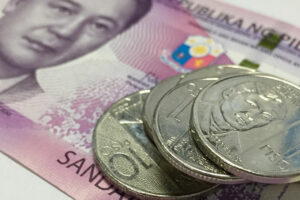In-season tourney

Austin Reaves could very well have ended up costing the Lakers victory over the Suns the other day. With 11.2 seconds left in the match and the lead cut down to two, he stopped on his tracks after receiving the inbounds pass in an attempt to draw a foul from Devin Booker. Unfortunately, the result was not at all what he desired. The ensuing contact made him lose his footing, and he scrambled to recover possession amid a double team. What saved him, and preserved the hosts’ two-point lead, was a timeout granted by referee Tom Washington on the other side of the court. Never mind that it seemed like the ball was loose at the moment. So instead of a possible tie, the score reflected a three-point advantage following a free throw by Anthony Davis. This then compelled Kevin Durant to take a hurried attempt from way beyond the arc at the buzzer.
Needless to say, not a few quarters wondered how the men in gray could have granted the Lakers their last timeout even when they didn’t appear to have control of the ball. And it remained a hot topic until — and even after — the National Basketball Association issued its Last Two Minute Report on the set-to. The review ruled it to be a correct call, noting that “LAL is granted a timeout when Reaves recovers the ball and pins it against his leg, before he loses it again.” Significantly, the explanation mimicked what crew chief Josh Tiven told pool reporter Jovan Buha immediately after the contest. “Through postgame video review in slow motion replay, we did see that Austin Reaves had his left hand on the ball while it’s pinned against his left leg, which does constitute control.”
To be sure, it’s fair to give the NBA the benefit of the doubt insofar as defining “control” of the ball is concerned. Nonetheless, all the clarification does is lay the predicate for the timeout to be requested at that exact instance. Which begs the question as to how James could have made what Reaves described as “a high-IQ play he’s made a million times” when he was nowhere near the play. In any case, Durant’s right. “That’s not the game. That’s one play. It was a 48-minute game.” And, in this context, it bears noting that the NBA’s LTM Report cited three wrong calls that should have been in favor of the Lakers.
Reaves does have James to thank for more than just the opportune timeout. Prior to his gutsy three-pointer with 15.1 seconds left in the encounter, he had missed five straight shots. What kept the Lakers ahead in the interim was the 21-year veteran’s sterling performance in the clutch; the 31-8-11-5 masterpiece ensured their trip to Las Vegas for the semifinal round of the In-Season Tournament (IST), where the inaugural title and $500,000 per winning player are at stake. And, yes, money continues to motivate even the ultra rich. Three weeks short of turning 39, the billionaire pointed out that “you’ve got the greatest competitors in the world fighting for something, so let’s fight.”
Up next for the Lakers are the Pelicans and, should things go according to plan, either the Bucks or the Pacers for the championship. And, according to Durant, the IST is “set up for them to win … I’m going to go with [them] because they beat us. They’ve got the size to compete with anybody. They’ve got the quickest flight out of anybody. The most fans out of anybody.“ They also happen to have James. Enough said.
Anthony L. Cuaycong has been writing Courtside since BusinessWorld introduced a Sports section in 1994. He is a consultant on strategic planning, operations and human resources management, corporate communications, and business development.




